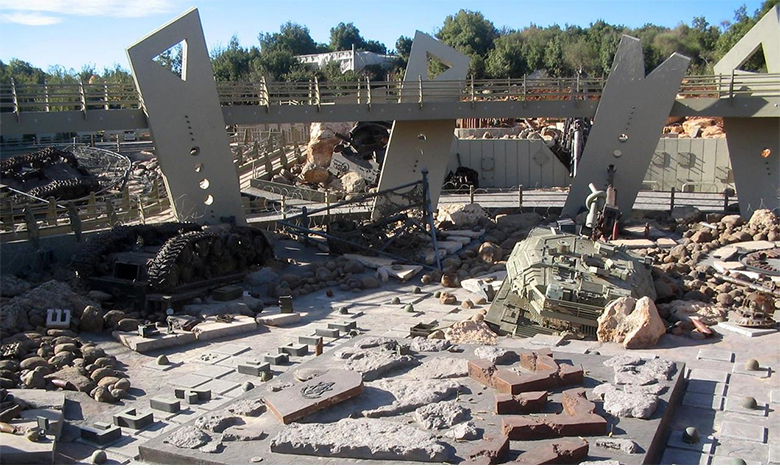This landmark is where Hezbollah first launched its resistance against Israel in 1985. Nobody lived here before; it was just an area for planting. It occupies 5,000 square meters and includes the captured remains of Israeli tanks and helicopters, cluster bombs that were dropped during the 2006 war, and a tunnel that was used as a safe place during 15 years of conflict.
The tunnel took three years and between 7,000 to 10,000 men to build. Inside, there’s a kitchen, sitting room and command center. We also have a lookout from where you can see the villages that were liberated in 1985, and we have plans to build a hotel, a restaurant and a park. Personally, I’d like to create a cultural place with a library and maybe a cinema with both entertainment and movies about the resistance.
People come here from all around the world; some want to learn about the history, some want to hear specific stories, others just want to have fun and walk around because it’s a green place. We opened in 2010, and since then, we’ve had nearly 1.6 million visitors, plus 500 journalists. We’re an official museum under the Ministry of Tourism and we receive guests regardless of their perspective. I’ve worked here since February 2013. Before that, I worked at the main office in Beirut. I handle our social media accounts and deal with students who are doing their theses on a subject the museum can support.
MY FATHER … SAID IF YOU WANT TO LIVE IN THIS WORLD YOU NEED TO ACCEPT THE PEOPLE AROUND YOU EVEN IF YOU DON’T AGREE WITH THEIR VALUES OR BELIEFS.
It’s also my responsibility to deal with media issues. Touring the area with journalists can be a challenge because they often have information about the country and history before they arrive. I need to be careful how I deliver information. I can answer every question except those that deal with money and funding because I don’t know about it. But my role is to be honest, presentable and open-minded — to show the best of myself because I represent the resistance.
My father always taught me to deal with people as humans and to leave religion for God. He said if you want to live in this world you need to accept the people around you even if you don’t agree with their values or beliefs. You need to find the agreed-on points. I’m not here to judge or to open a court.
Before I moved here, I worked in the Gulf for the Body Shop and as an HR manager for a fashion company. When I returned to Lebanon, in 2003, I worked with Al-Manar, Hezbollah’s official TV station. I always liked the style of their programs, and I knew one day I’d work for them. I believe in the resistance and I want to support it. I studied business administration and I have a diploma in human relations, so I feel this is a good fit. Working here makes me feel like I’m preserving the memory for the next generation.
The children who live in this area hear stories so they know what the resistance means. Most of our families have a martyr in their house. But there are children who don’t know about it because they were born after our liberation day in 2000. But the resistance is not something you can teach in a curriculum. It’s something that is with you — it’s a concept, a dignity, something to believe in.
I’m 47. I’m not young. I have high blood pressure, and I get migraines. But being here helps me relax. I divide my time between my responsibilities here and pursuing a master’s degree in education. My thesis will be about the impact of music on student behavior and personality.

